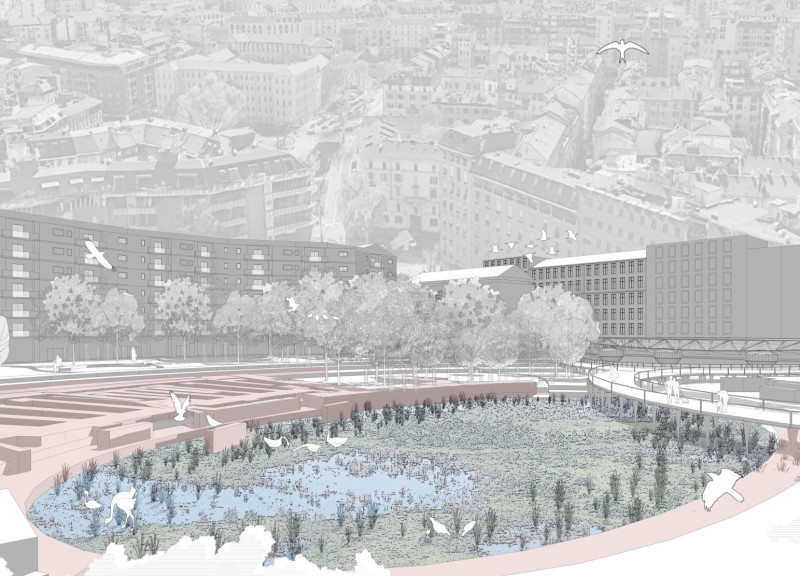5 key facts about this project
"Rinascimento in Blu" reimagines the urban landscape of Milan, with a focus on integrating water into the city's design. Located in Parco Archeologico, the initiative seeks to tackle the issues of increasing urban density and rising temperatures through thoughtful architectural solutions. The central idea is to create a new civic spine that supports ecological sustainability while enhancing social connections, transforming public spaces into multifunctional areas.
Design Concept
The design addresses the Urban Heat Island (UHI) effect by proposing interventions that are responsive to climate conditions. By blending architecture with landscape features, the project promotes a comfortable urban environment. It employs engineered cooling devices that use natural ventilation and evaporative cooling strategies, allowing the spaces to feel fresher and more inviting. This combination benefits both the residents and the city’s ecosystem.
Water Management Strategy
A key feature is the comprehensive water management approach applied across three main sites: Parco Archeologico, Parco Rossi, and Darsena. Each area focuses on water retention, filtration, and recycling, ensuring that the project embodies climate-resilient principles. These strategies improve the handling of stormwater and help maintain better urban water quality, creating a more functional urban area.
Interactive Elements
The Aqua Spectacle serves as an engaging retention basin that captures neighborhood runoff and integrates an artificial wetland system. This element is designed to manage water effectively while also enhancing recreational opportunities within the community. It connects visitors to the historical remnants of the Roman Amphitheatre, making the space culturally relevant as well as functional.
Public Engagement
The Water Recycle Pavilion, situated in Darsena, acts as both an educational facility and a point of connection to the wider canal. The design includes shaded areas that invite social gatherings, and it features systems for purifying water. This pavilion reflects a commitment to involving the community in ecological practices and promoting awareness of water management.
Incorporating a diverse planting strategy, the project includes large deciduous trees, medium common oaks, and small ginkgos. These selections contribute to creating a vibrant landscape that fosters biodiversity while providing shaded areas for relaxation and enjoyment.






















































